
When it comes to taking care of plants or vegetables, there is so much more involved than your standard water and sunlight.
Granted, while I got by with water (before California’s major drought) and sunlight, I learned so much more then about how to keep indoor, outdoor plants and vegetables healthy and have them thrive.
What is important is to know about NPK (Nitrogen, Phosphorous and Potassium), the three vital nutrients that a plant needs for photosynthesis, the process by which plants manufacture their food.
Often, you will see an NPK listed on the box of how much of those nutrients are included.
Nitrogen is important for chlorophyll (the green pigment responsible for photosynthesis.
Phosphorous is important for blooming and root growth.
Potassium is important for fruit and seed quality.
Leafy green plants need more nitrogen. Blooming plants need a higher phosphorous and fruits and grains need higher potassium.

Before I go into this post, I recommend wearing protective eyewear/goggles, gardening gloves and respirator if you are sensitive to any of these products. I also recommend purchasing a moisture/light/pH tester, which are inexpensive.
So, let’s take a look at a few products and see what they are for:
Alaska Fish Fertillizer
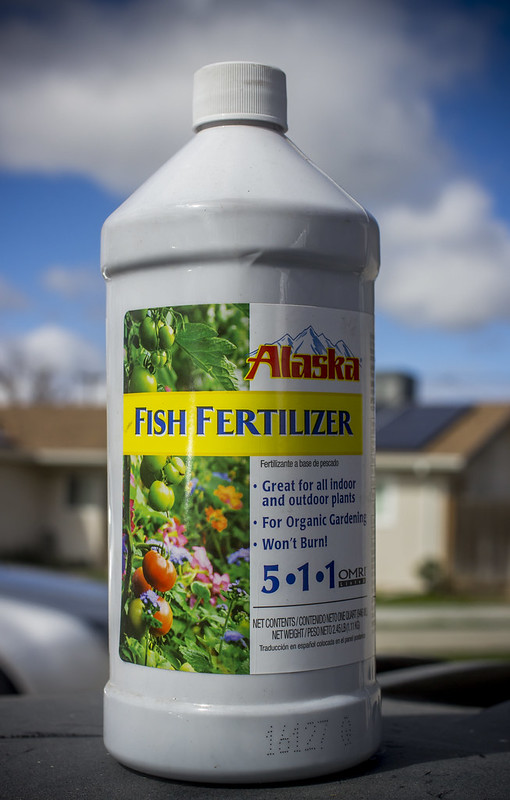
NPK RATIO: 5-1-1
Alaska Fish Fertilizer is manufactured by Lilly Miller and is derived from seagoing fish. With 5% nitrogen and 1% phosphorus and potassium, this fertilizer has a low concentration of nutrients, so the nutrients are released slowly and lasts longer.
Use 4 tablespoons in 1 gallon of water. Outdoor plants, best to dilute to 3 tablespoons per gallon of water. For indoor plants, use 2 teaspoons per quart.
I use a spray bottle to apply to plants/vegetables. It is important to wear eye protection and don’t spray during windy conditions as you don’t want it flying into your eyes. Do not fertilize during a hot afternoon or when sun is directly on plant, or you can damage plant.
POSITIVES: Because of low concentration, less likely to damage leaves.
NEGATIVES: Strong fish odor as expected. Get it in your eyes or ingesting this fish fertilizer is just bad!
Blood Meal
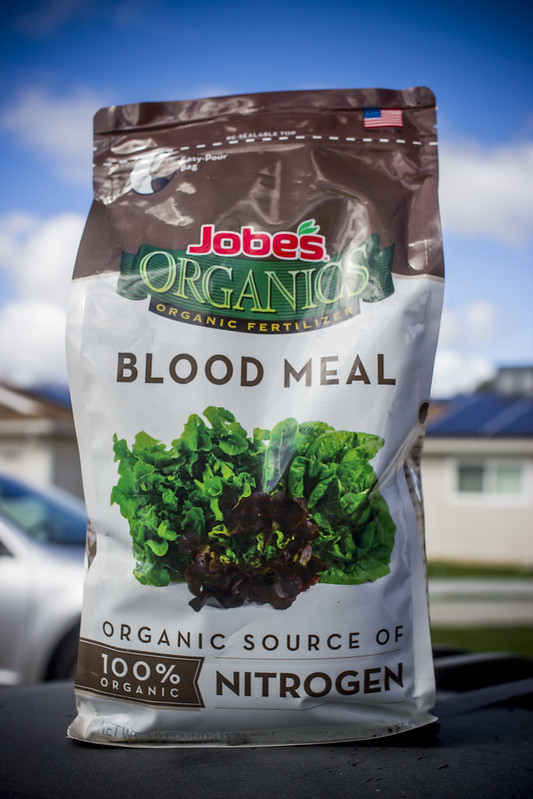
NPK RATIO: 12-0-0
I think the fact that blood meal is made of dried blood of an animal (typically from cattle or hogs), it may turn people off. The dried blood is converted to dry powder and it raises the nitrogen levels of a plant to make them green and lush.
Unlike the fish fertilizer which is only 5% nitrogen, this product is 12% and something you don’t want to use too much. In fact, blood meal has the highest non-synthetic source of nitrogen. So, follow the instructions!!!! Also, blood meal can attract dogs and sometimes other unwanted animals. But is also used as deterrents for moles, squirrels and deer.
POSITIVES: Because of high concentration, great for green and lush vegetation. Serves as deterrent for certain animals.
NEGATIVES: Because of high concentration, use too much and you will prevent certain plants from flowering or burn your plants. Also, may attract unwanted animals.
Burpee Natural Organic Transplanting Granular Plant Food
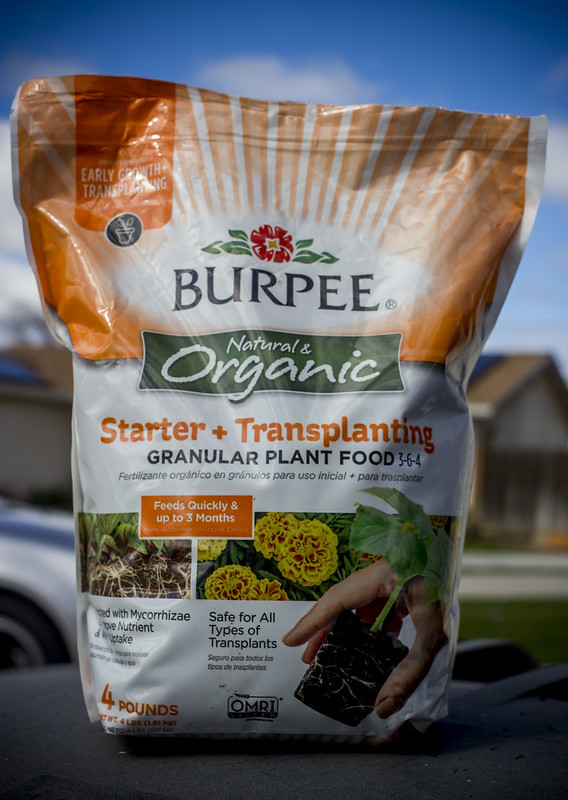
NPK RATIO: 3-6-4
When germinating from seeds and are planning to transfer your plants to the ground or to pots, Burpee’s Natural Organic Transplanting Granular Plant Food is worth using.
According to Burpee:
Reduces transplant shock!
POSITIVES: Provides beneficial nutrients for plant growth and health. Promotes mycorrhiza (a symbiotic association between a fungus and the roots ofa vascular host plant) and plays an important role in soil biology ad soil chemistry. The Burpee product claims to feed plants for three months.
NEGATIVES: N/A
Bone Meal
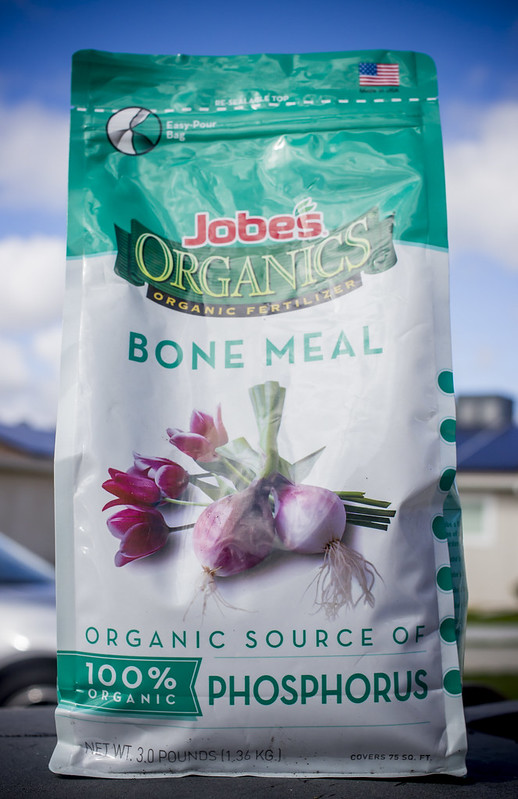
NPK RATIO: 2-14-0
Similar to blood meal which comes from dead animals, bone meal is a mixture of finely and coarsely ground animal bones and slaughter-house waste products. And bone meal comes with a high source of phosphorous (Jobes Organics comes with 14%). But also for the added benefit, comes with 2% nitrogen.
Phosphorous helps in a plants ability to grow and photosynthesis effectively. As calcium is vital to help plants grow, phosphorous occurs naturally in the soil but sometimes plants need more of it than the soil can provide.
POSITIVES: Helps plants grow if not getting adequate phosphorous and calcium from soil. Will not burn plants and also has important nutrients.
NEGATIVES: Must be used with soil under pH 7.0 (so you’ll need a pH meter). Meant for soil for plants but bad for any human or pets if ingested. Wear gloves and mask if applying bone meal, just for safety and accidental inhalation.
Garden Lime

NPK RATIO: N/A
There are plants that require an acidic soil. And thus, garden lime is needed. Before using garden lime, please use a pH tester to check your soil.
Garden lime is an agriculture lime made from calcium carbonate. The lower the pH, the acidic the soil. Most vegetables and fruits are between 5.5 and 6.5. Flowers such as azaleas and camelias prefer pH around 5.0 and 5.5. Garden lime raises soil pH. If a plant requires a high pH, this is when garden lime is needed. If a plant requires a low pH and needs to be acidic, then add sphagnum peat.
Lime enters the soil slowly.
POSITIVES: Increases pH and makes soil more alkaline.
NEGATIVES: May lead to soil having excess salt and stunt plants and cause leaves to turn yellow.
Perlite
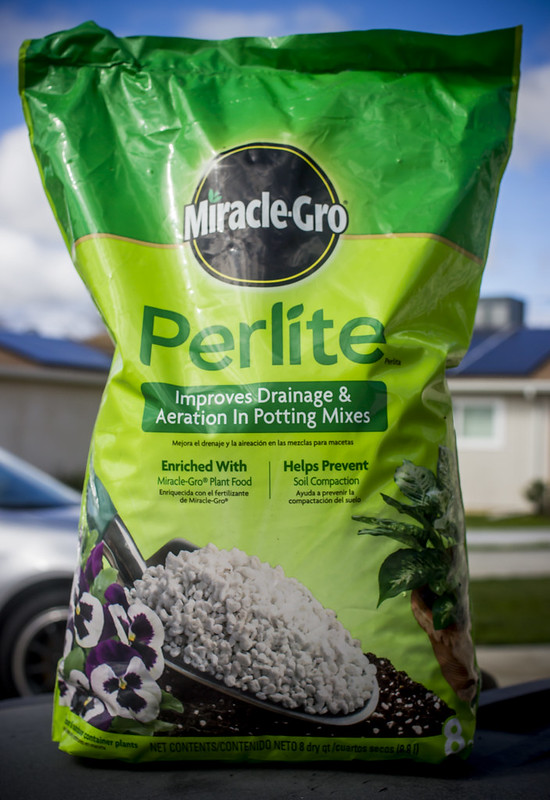
NPK RATIO: .07-.07-.07
Made from amorphous volcanic glass, perlite is known for its high water content and improves aeration and modification of soil. It keeps soil loose and helps it drain water and helps reduce extreme soil temperatures. It’s clean, odorless, safe for plants and is recommended to be mixed with 1/3 perlite, 1/3 peat moss and 1/3 compost.
POSITIVES: Great for moisture and nutrients available for plants and improves aeration and drainage. Free from disease, weeds and insects and never gets soggy. In fact, it does not decompose. Great for mixing in pots. Inexpensive.
NEGATIVES: Perlite can block pores of heavy rooted plants. Wear a mask when handling perlite and avoid breathing in perlite dust.
Sphagnum Peat Moss
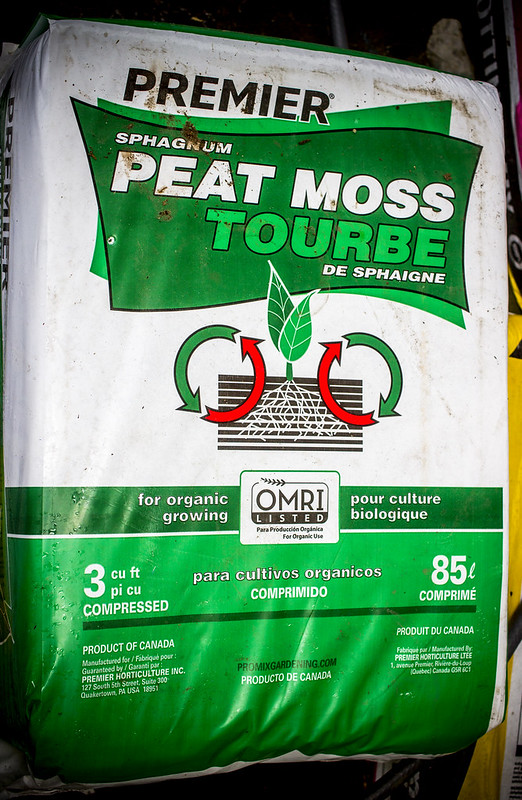
NPK RATIO: N/A
Great for absorption and water retention but also contributes to organic matter and ingredients to plants. Made of 100% sphagnum peat canadian, the peat moss is rich in organic matter and 100% natural. Free of insects and unpleasant odor and large capacity water holding and retains nutrients near the roots. Reduces the frequency of irrigation and insures optimum plant growth.
Another plus is that after made wet, it remains springy and is long lasting. Does no compact like other organic materials.
POSITIVES: Great for moisture and nutrients available for plants and improves aeration and drainage. Free of insects and never gets soggy. Reduces the frequency of irrigation and insures optimum plant growth. Does not compact, remains wet and stringy.
NEGATIVES: The International Peat Society has said that the mining process of peat moss releases massive amounts of carbon into the atmosphere and the bogs continue to exhale carbon long after the mining concludes. If you have environmental concerns, you may want to look for alternatives.
Vermiculite
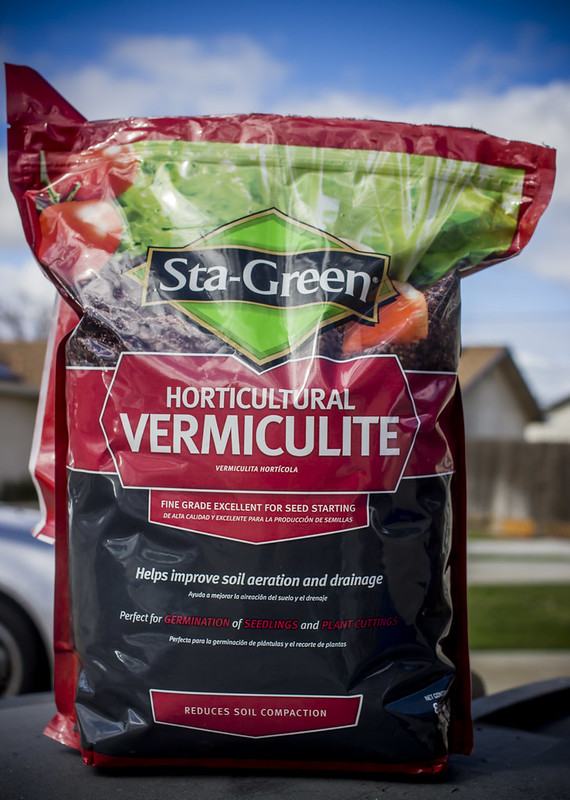
NPK RATIO: .07-.07-.07
From commercial vermiculite mines in the USA, Russia, South Africa, China or Brazil is a hydrous phyllosilicate mineral known as vermiculite. Similar to perlite, vermiculite improves aeration and drainage. It doesn’t break down and while pH neutral, it can increase pH for acidic soil. It also reacts to soil and provides nutrients such as ammonium, calcium, potassium and magnesium. Similar to perlite, great to use (1/3) with 1/3 peat and 1/3 compost.
POSITIVES: Great for moisture and nutrients available for plants and improves aeration and drainage. Great for germination. Inexpensive. Less aerating than perlite, but can be more beneficial for water-loving plants.
NEGATIVES: Had a bad wrap in the ’90s due to a contaminated Libby Mine in Montana which vermiculite had trace amounts of asbestos (which are thin and can damage the lungs). Less aerating than perlite. Some stores do not carry it.
